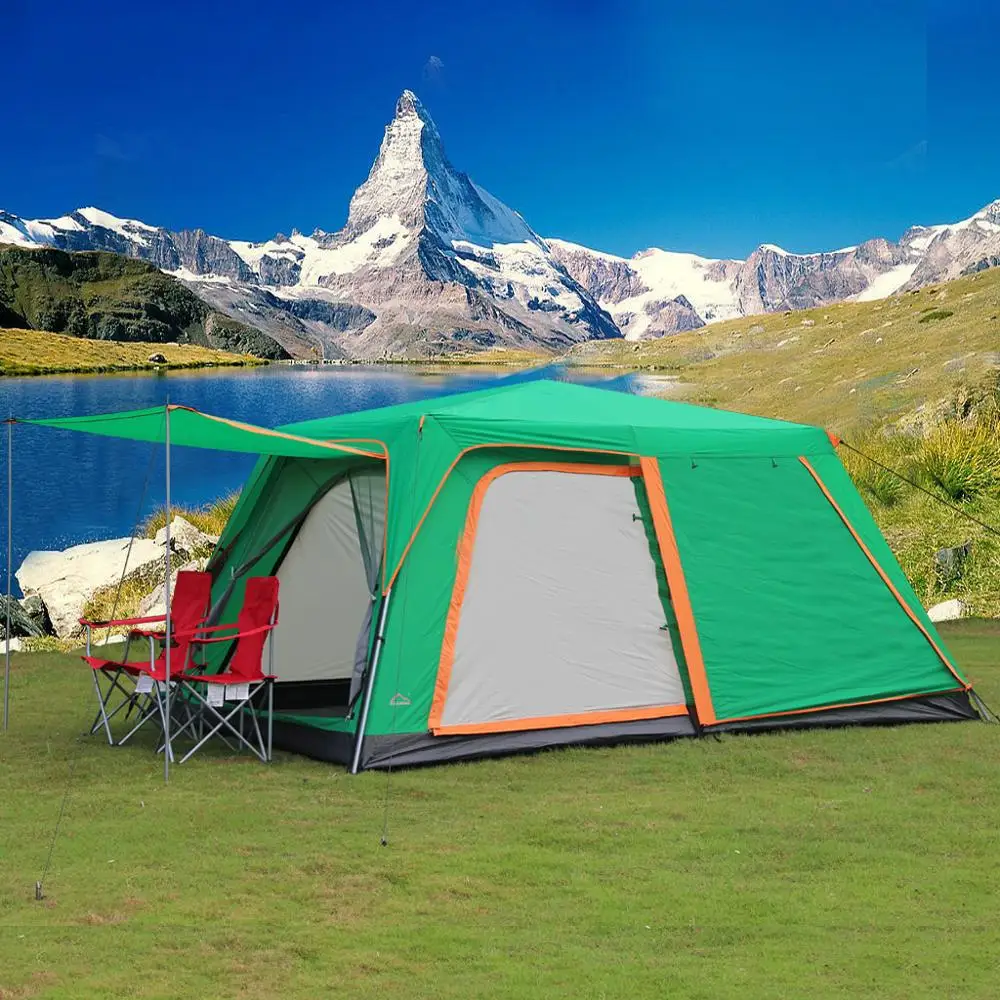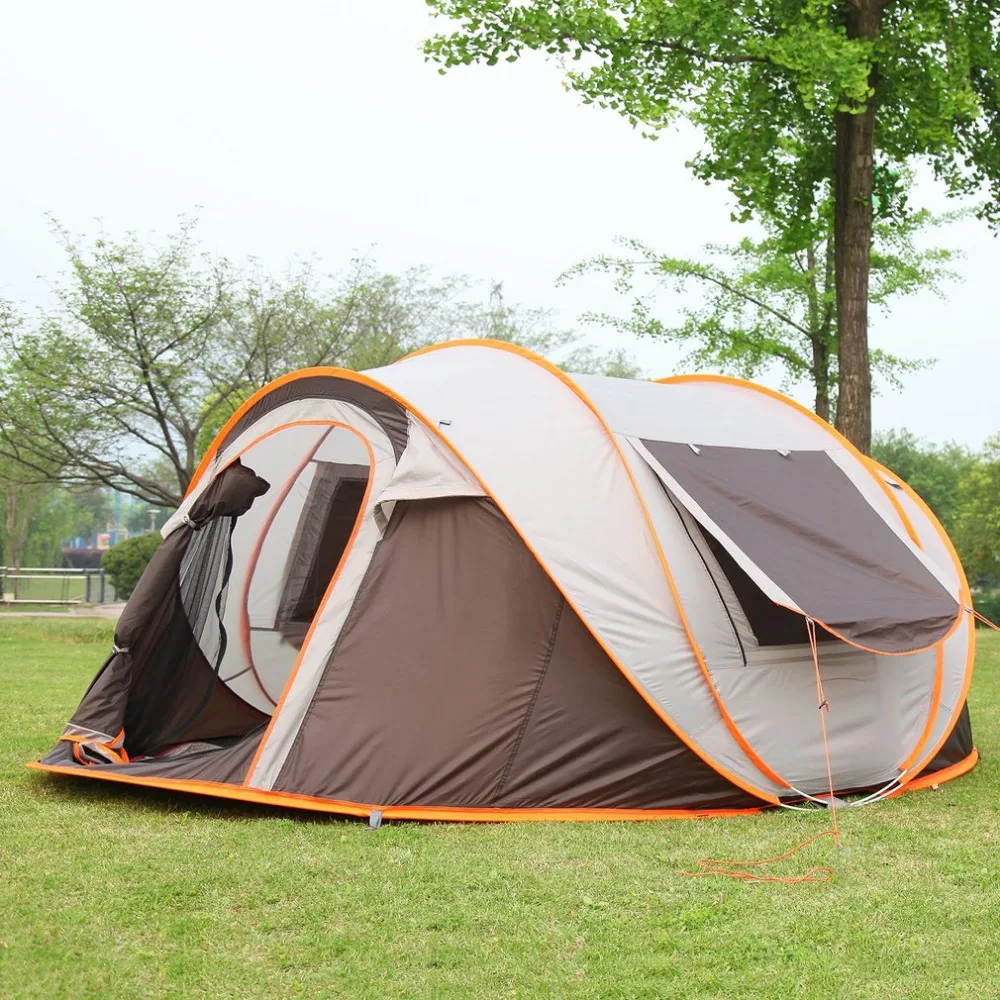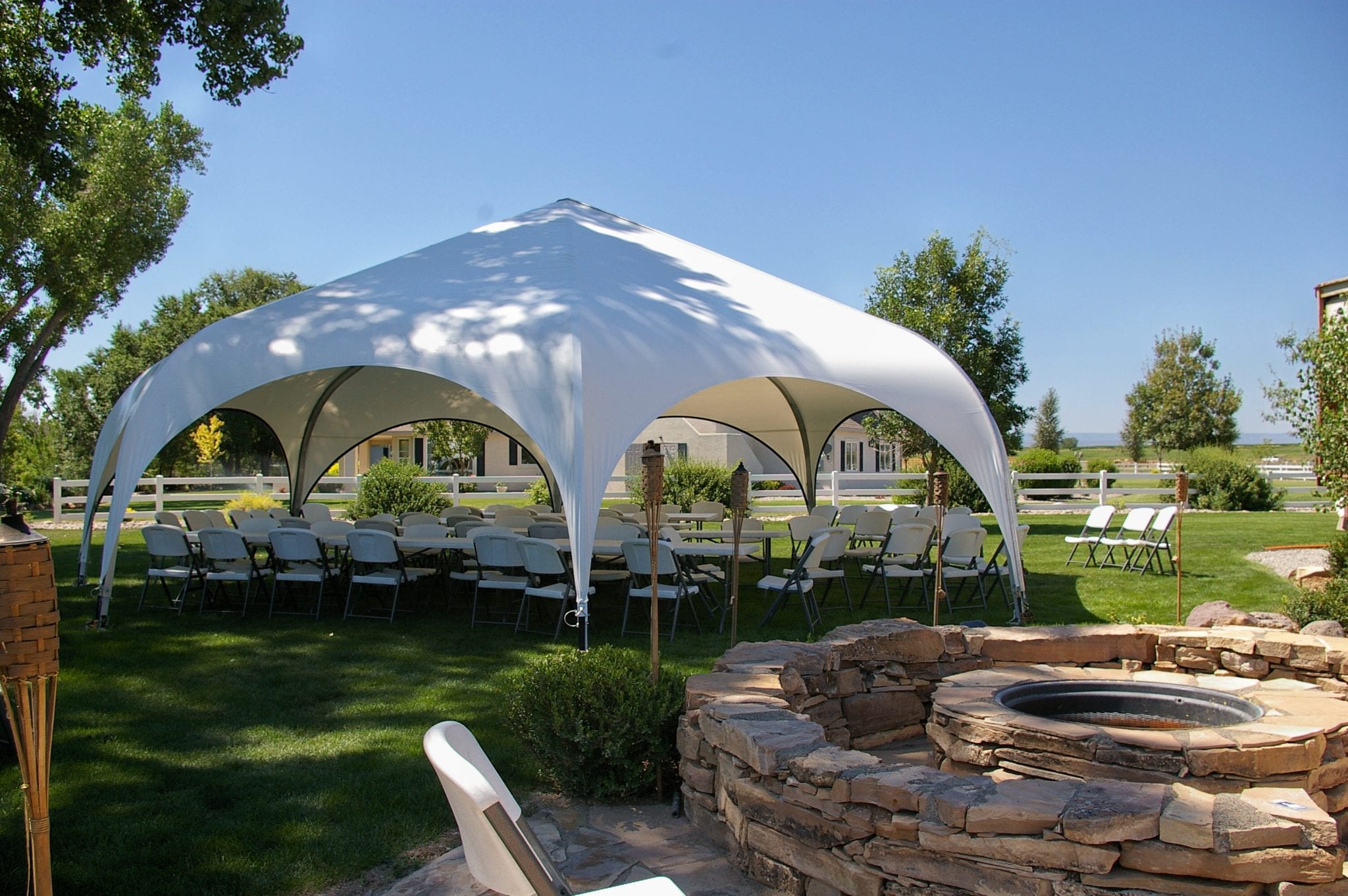I. Introduction

A. The importance of selecting the right tent for a comfortable and enjoyable outdoor experience
When venturing into the great outdoors, having a suitable and reliable tent is essential for ensuring a comfortable and enjoyable camping experience. The tent serves as your shelter, protecting you from the elements and providing a cozy place to rest and relax during your outdoor adventures. Choosing the right tent can greatly enhance your camping experience and contribute to your overall enjoyment.
B. Overview of the benefits and considerations of using a big outdoor tent
Opting for a big outdoor tent offers several advantages. Firstly, it provides ample space for you and your fellow campers to move around and store your gear comfortably. A larger tent can also accommodate additional sleeping accessories, such as air mattresses and camp cots, ensuring a better night’s sleep. Additionally, big tents generally offer better headroom, allowing for more comfortable movement inside the tent. However, it’s important to consider certain factors when choosing a big outdoor tent, such as its purpose, capacity, design, and weather resistance, to ensure it meets your specific needs and preferences.
II. Factors to Consider When Choosing a Big Outdoor Tent
A. Purpose and Capacity
- Identifying the purpose of the tent (family camping, group outings, etc.) Consider the specific activities and number of people the tent will accommodate. If you’re camping with your family or a large group, you’ll need a tent with sufficient space to accommodate everyone comfortably. On the other hand, if you’re planning a solo trip or camping with just one other person, a smaller tent may be more suitable.
- Determining the size and capacity needed to accommodate occupants and gear Consider the number of people who will be using the tent and the amount of gear that needs to be stored inside. Ensure the tent has enough floor space for sleeping bags, gear, and any other equipment you plan to bring along.
B. Tent Design and Structure

There are various tent designs available on the market, each with its own strengths and weaknesses. Consider the following options when selecting a big outdoor tent:
- Dome tents Dome tents are popular for their sturdy structure and excellent stability against wind. They typically have a rounded shape and offer good headroom and livable space.
- Cabin tents Cabin tents are known for their vertical walls, providing more headroom and livable space compared to other designs. They often have large windows and multiple rooms, making them suitable for family camping trips.
- Tunnel tents Tunnel tents feature a curved shape with multiple arched poles, creating a tunnel-like structure. They offer good headroom and can accommodate multiple occupants, making them ideal for group camping.
- Geodesic tents Geodesic tents are designed with interconnected poles that form a strong and stable structure, capable of withstanding harsh weather conditions. They are often used for mountaineering and expedition camping.
Consider ease of setup, as some tent designs may require multiple people and more time to assemble. Additionally, assess the tent’s durability and the quality of its materials and construction to ensure it can withstand the rigors of outdoor use.
C. Seasonality and Weather Resistance
Consider the prevailing weather conditions in your camping destination and the tent’s suitability for those conditions. Key considerations include:
- Three-season tents Three-season tents are designed for spring, summer, and fall use. They typically offer good ventilation, protection against light rain, and moderate wind resistance. However, they may not be suitable for harsh winter and snowy conditions.
- Four-season tents Four-season tents, also known as winter or mountaineering tents, are designed to withstand more extreme weather conditions, including heavy snow, strong winds, and low temperatures. These tents often have robust structures, reinforced poles, and stronger fabric, offering greater weather resistance.
III. Key Features and Considerations

A. Tent Materials
- Different types of tent materials (nylon, polyester, canvas)
- Nylon: Lightweight, durable, and quick-drying. It is the most common material used in camping tents.
- Polyester: Offers similar characteristics to nylon but may be slightly heavier. It tends to be more UV-resistant and less prone to stretching.
- Canvas: Heavy-duty and highly durable. Canvas tents provide excellent breathability, insulation, and natural waterproofing but are heavier and require more maintenance.
- Weighing the pros and cons of each material in terms of durability, breathability, and weather resistance
- Nylon and polyester are both lightweight, durable, and offer good weather resistance. They are suitable for most camping conditions.
- Canvas is exceptionally durable and provides excellent breathability, making it ideal for long-term or more challenging camping trips.
B. Tent Poles and Frame
- Types of tent poles (aluminum, fiberglass, carbon fiber)
- Aluminum poles: Lightweight, durable, and strong. They tend to be the most commonly used poles in camping tents.
- Fiberglass poles: Affordable and flexible but not as strong or durable as aluminum. They are suitable for less extreme camping conditions.
- Carbon fiber poles: Lightweight, incredibly strong, and flexible. They are often used in high-end mountaineering tents but come at a higher cost.
- Considerations for strength, flexibility, and ease of setup
- Aluminum poles are the go-to choice for most campers due to their combination of strength, durability, and ease of setup.
- Fiberglass poles offer more flexibility but may be prone to breakage in extreme conditions. They are suitable for casual camping trips.
- Carbon fiber poles are the strongest and lightest option, making them ideal for intense mountaineering or backpacking adventures.
C. Interior Space and Layout

- Considerations for headroom, floor space, and number of rooms or compartments
- Evaluate the tent’s peak height to ensure sufficient headroom for comfortable movement inside the tent.
- Consider the tent’s floor area and the number of occupants it can comfortably accommodate.
- Look for tents with separate rooms or compartments if privacy and organization are important to you.
- Evaluating the tent’s features for organization and storage of gear
- Internal pockets and gear lofts help keep small items organized and within reach.
- Look for built-in hooks or loops for hanging lanterns or other lighting sources.
- Consider vestibules or additional storage space to keep gear and equipment dry and protected.
D. Ventilation and Airflow

- The importance of adequate ventilation for condensation control and comfort
- Proper ventilation helps minimize condensation buildup inside the tent and maintains a comfortable temperature.
- Look for tents with mesh panels, windows, and vents to ensure adequate airflow.
- Evaluating vents, mesh panels, and windows for airflow and bug protection
- Vents and mesh panels allow for air circulation while keeping bugs and insects out.
- Windows provide natural light and additional airflow, but ensure they have proper closures for privacy and protection against rain.
E. Additional Features and Accessories
- Rainfly and vestibule options for added protection and storage space
- A rainfly provides an extra layer of waterproofing and protection from the elements.
- A vestibule offers additional covered space outside the main tent for storing gear, boots, or cooking equipment.
- Guy lines, stakes, and footprint for stability and protection against rough terrain
- Guy lines and stakes help secure the tent to the ground, enhancing stability and resistance to wind.
- A footprint or groundsheet provides an extra layer of protection for the tent’s floor against sharp objects and moisture.
- Considerations for extra features like internal pockets, lantern hooks, and electrical access ports
- Internal pockets help keep personal items organized and easily accessible.
- Lantern hooks offer a convenient spot to hang lighting sources for better illumination.
- Electrical access ports allow for easy charging of devices or powering small electrical devices within the tent.
